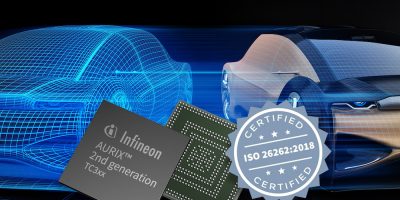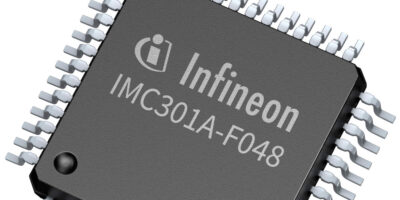The MAX32520 ChipDNATM secure Arm Cortex-M4 microcontroller from Maxim Integrated Products is a secure microcontroller with built-in physically unclonable function (PUF) technology for financial- and government-grade security. The technology allows for multiple layers of protection to provide advanced key-protection technology for use in Internet of Things (IoT), health care, industrial and computing systems.
The MAX32520 with ChipDNA offers multiple layers of protection through its PUF technology, a key-protection technology for safeguarding secrets used in cryptographic operations. It uses a tamper-proof PUF key for flash encryption, secure boot for root-of-trust and serial flash emulation. Additionally, the physical security inherent in the PUF key eliminates the need for a battery to actively destroy secret-key materials when under attack. Until now, the most-sensitive applications have always required a battery to provide this highest level of secret-key protection.
The secret keys generated by the ChipDNA PUF circuitry are resistant to physical attacks, ensuring the keys that protect data and systems are out of the reach of attackers. Flash-encryption using PUF protects sensitive information with encryption keys that can withstand advanced physical inspection and prying, as well as providing robust IP security. The DeepCover secure microcontroller can protect all user data, as it is equipped with SP 800-90A and SP 800-90B compliant TRNG and hardware accelerators for AES-256, ECDSA P-521 and SHA-512.
Delivering up to 2MB of secure flash memory means advanced applications can run in a highly secure environment. Built on an advanced process node, this secure microcontroller provides advanced security features, a 120 MHz ARM Cortex M4 processor and plenty of memory. It eliminates several components like a battery, a tamper monitor IC and system management micros that are often found in security-sensitive applications.
“Enabling developers to incorporate PUF-encrypted flash and secure boot loading without system redesign or in-house code development will help them reduce time-to-market dramatically,” said Tanner Johnson, senior analyst, IoT cybersecurity at Omdia.
Kris Ardis, executive director, micros, security and software business unit at Maxim Integrated said: “The threats to IoT systems are getting more advanced all the time, and tools to attack systems move from the realm of academia to the realm of open source every day. MAX32520 with ChipDNA is a step forward.”







